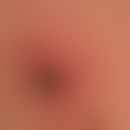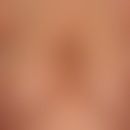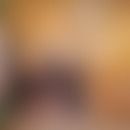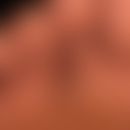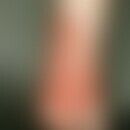Synonym(s)
HistoryThis section has been translated automatically.
Winkelmann R et al. (1979)
DefinitionThis section has been translated automatically.
Pemphigus vegetans is a rare variant of bullous pemphigoid with vegetative changes in the intertriginous areas such as the inguinal regions, axillae, retroauricular or eyelid area, probably as a result of secondary infections.
You might also be interested in
LocalizationThis section has been translated automatically.
Intertriginous areas such as inguinal regions, axillae, submammary, retroauricular, eyelid areas.
ClinicThis section has been translated automatically.
Recurrent weeping or suppurating, verrucous growths next to bullous, crusted or scaly foci reminiscent of vegetative pyoderma.
HistologyThis section has been translated automatically.
Differential diagnosisThis section has been translated automatically.
TherapyThis section has been translated automatically.
Case report(s)This section has been translated automatically.
Case report (Khatib Y et al.2015)
A 9-year-old female patient had recurrent, multiple, itchy, vesiculopustular lesions on the forehead, eyelids, periorbital, perioral, labia, vulva and inguinal areas for one year. Ulcers were also found in the oral cavity. The lesions gradually enlarged into purulent-vegetative plaques. The patient was treated with topical steroids and antibiotics, which led to partial healing of the lesions.
After 2 months, similar lesions with vesicles and pustules appeared in the orbits, eyelids, mouth, auricle and vulva. She was treated with antibiotics, antivirals and topical steroids, after which the lesions partially healed.
Six months later, she presented again with multiple, non-tender, vesiculopustular lesions and brown-blackish verrucous plaques on both eyebrows, eyelids, lips, perioral and vulva. The oral mucosa showed multiple ulcerations with a fissured tongue surface.
Family history negative. Fever, diarrhea or medication intake were not known. Pemphigus vegetans and chronic bullous diseases in childhood were considered in the differential diagnosis.
Lab: Eosinophilia of 16%. Serum levels of IgG, IgM, IgA and complement were normal. Serum IgE levels were elevated [588 IU/ml].
Antidesmoglein antibody 1 (anti-Dsg-1) was 4.6 U/ml (normal value < 14) and antidesmoglein antibody 3 (anti-Dsg-3) was 6.62 U/ml (normal value < 7) (measured by enzyme immunoassay/ELISA).
A skin biopsy showed the presence of a subepidermal blister with eosinophils and neutrophils. The surrounding epidermis showed epidermal hyperplasia with acanthosis and elongation of the retinal tips. No acantholysis was observed.
Direct immunofluorescence of the perilesional skin showed a linear deposition of IgG in the basement membrane zone (BMZ). In the split specimen, the BMZ band was seen on the epidermal side of the cleft, confirming the diagnosis of bullous pemphigoid.
LiteratureThis section has been translated automatically.
- Al-Najjar A et al. (1984) Pemphigoid vegetans: A case report. Acta Derm Venereol 64:450-452.
- Chan LS et al. (1993) Pemphigoid vegetans represents a bullous pemphigoid variant. Patient's IgG autoantibodies identify the major bullous pemphigoid antigen. J Am Acad Dermatol 28:331-335.
- Khatib Y et al.(2015) Pemphigoid Vegetans in Childhood: A Case Report and Short Review of Literature. Indian J Dermatol 60:422.
- Kuokkanen K et al (1984) Pemphigoid vegetans. Report of a case. Arch Dermatol 117:56-57.
- Ogasawara M et al (1994) Pemphigoid vegetans. J Am Acad Dermatol 30:649-650.
- Ueda Y et al (19899) Pemphigoid vegetans. Br J Dermatol 120:449-453.
- Winkelmann R et al (1979) Pemphigoid vegetans. Arch Dermatol 115:446-448.
- Yang E et al.(2025) Pemphigoid vegetans presenting as recurrent, non-healing ulcers on bilateral postauricular sulci. J Dtsch Dermatol Ges 23:112-113.
Incoming links (1)
Vegetarian pemphigoid;Outgoing links (1)
Bullous Pemphigoid ;Disclaimer
Please ask your physician for a reliable diagnosis. This website is only meant as a reference.
